http://english.ahram.org.eg/NewsContent/9/40/330442/Heritage/Ancient-Egypt/Controversy-hits-newly-restored-Ramses-II-colossus.aspx
Controversy hits newly restored Ramses II colossus at Luxor Temple
Debate has arisen around whether the newly restored colossus of Ramses II at Luxor Temple has been placed in the correct location and has the right body position to accord to the original temple layout
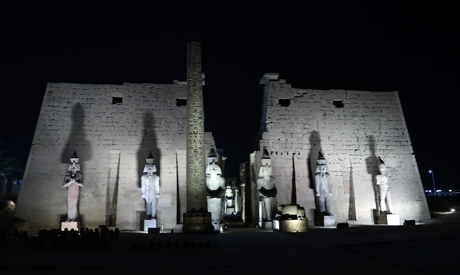
Some oppose the placement of the colossus before the first pylon of the temple. They say the colossus has the Osirian position (crossing the hands on the chest), which contradicts with neighbouring colossi, who have their left legs before the right. The latter, opponents assert, are the original colossi that stand before the façade of any temple. "The colossus of Ramses II is in its original location, as restorers have just restored the colossus and re-erected it in the location where its blocks were found," asserted Ahmed Arabi, director of Luxor Temple.
Arabi told Ahram Online that the façade of Luxor Temple had two original architectural designs. The first was drawn during its construction at the beginning of King Ramses II's reign, and the second was drawn during the end of the monarchy of King Ramses II. The original design, Arabi continues, is drawn behind the eastern pylon on the left entrance and it shows the façade with two seated colossi of the king and two obelisks, which is the characteristic design of all temples of the New Kingdom.
The newer design is drawn on the southwestern side of the façade and it shows six colossi and two obelisks.
"From the later, the façade had two colossi originally and then four other statues were added at the end of King Ramses II's reign to extend the number to six colossi," Arabi pointed out. He asserted that the restored colossus is the one that whose blocks were uncovered by Egyptologist Mohamed Abdel-Qader along with the blocks of other colossi of the Luxor Temple's facade between 1958 and 1960.
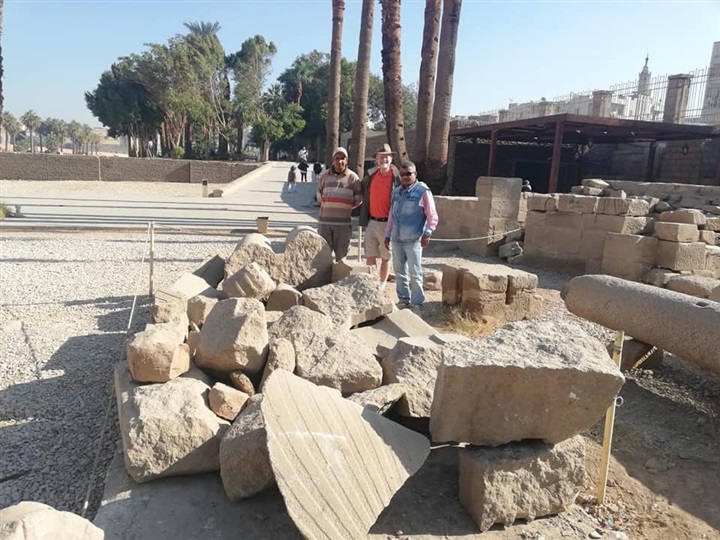
All these statues were destroyed due to a destructive earthquake that had hit the country in antiquity. Abdel-Qader was able to collect all the blocks and pieces of the colossi and put the ones of each colossus on a wooden base in its original location to ensure its protection. In a scientific newsletter, of which Ahram Online obtained a copy, Abdel-Qader wrote that one of the statues he found before the temple's facade was in the Osirian position.
Arabi suggested that the statue could has been transferred from another place inside the temple, maybe at the end of Ramses II's reign, to decorate the façade of the temple. He explained that several Osirian statues decorate the façade of ancient Egyptian temples. The western façade of Luxor Temple has two Osirian colossi. In the first court of Karnak Temple there is a gigantic colossus of King Rames II in Osirian form.
Ahmed Al-Emari from Luxor Temple said that American Egyptologist Ray Johnson, director general of the Chicago House mission, witnessed restoration work on the colossus, as the statue was restored by an Egyptian-American mission.
Johnson shared his opinion on the restored colossus with Ahram Online and said that the reliefs of the Luxor Temple pylon façade at the back of the first court, that depicts the pylons, two obelisks, flagpoles, and statues, were carved before the statues were put in place and reflect the original plan that was never completely carried out.
The original plan seems to have been for all the pylon colossal sculptures to be original grey granodiorite statues of Ramses II, striding and seated. But, he continued, for some reason that plan changed, perhaps to meet Ramses II's deadline for completion, and two earlier red granite statues were brought in and inscribed for Ramses II, one for the far east side and one for the far west side.
The westernmost colossus, still standing, was originally Amenhotep III, and is also different: it had a white crown, not a double crown, and is also red granite.
"The easternmost red granite colossus, that was just reassembled with the financial support of Chicago House and the US Embassy, was a late 18th Dynasty colossal statue, possibly of Horemheb (the face is reworked)," Johnson said.
He continued that the pieces of the statue that survive indicate that it was in the Osirian pose. The base of the statue that was still in situ was too small for a striding statue, which indicates that the statue was standing and not striding.
"The reconstruction, and original position, are 100 percent correct," Johnson confirmed, adding that sometimes plans change, even in ancient Egypt. Inside the first court, Ramses II's colossal statues, inscribed with the early form of his name (Ra-ms-ss), were placed alongside Amenhotep III's statues (the original Ramses II statues do not have bull tails between their legs, while the original Amenhotep III statues all have bull tails between their legs).
When Ramses II erected the statues there, the original names of Amenhotep III were left intact, because Ramses II wanted to be associated with the glorious king who built third of Luxor Temple. Later, Johnson continued, just before Ramses II's first jubilee, he changed his mind and erased Amenhotep III's names and re-inscribed the colossi with his own name, in the later form (Ra-ms-sw), taking over their identity. All of Ramses II's original statues in the first court are inscribed with the early form of Ramses' name, while the original Amenhotep III statues are inscribed with Ramses II's later name.
"This tells us that he didn't appropriate the Amenhotep III statues until many years after he placed them in the court," Johnson said. "Another change of plan."
Johnson asserted that the outermost colossal statues in red granite on the far eastern and far western sides of the pylons were both part of a revised plan for the pylon façade, and that the reconstruction is correct. Egyptian restorers have done an extraordinary job, he said, and have brought the Luxor Temple pylon façade back to glorious life. All Egyptian temples of the New Kingdom were decorated in a similar manner, but Luxor Temple is now the only temple in Egypt that has all six of its original colossal sculptures in their original places.
"Congratulation to the Supreme Council of Antiquities, the Ministry of Antiquities, and to Egypt for this wonderful work."
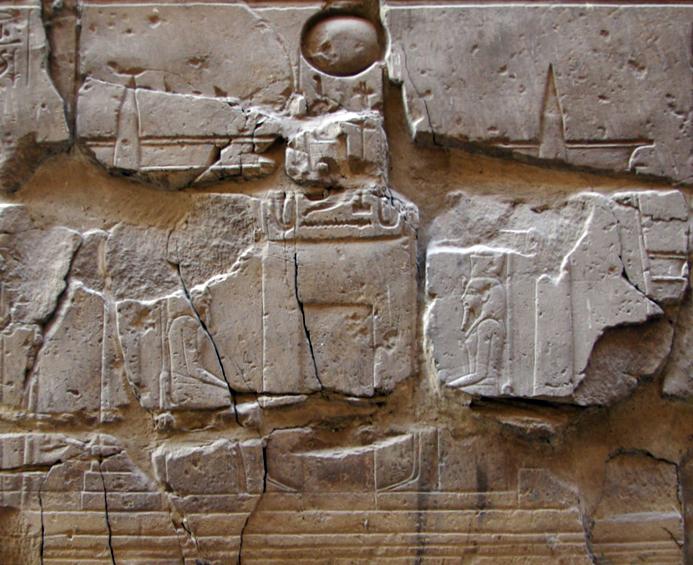
For her part, Egyptologist Horig Sourouzian, whose doctoral dissertation from the Sorbonne was on monumental statues of the New Kingdom, told Aham Online that the newly restored colossus has been in this place since its creation and was added during the expansion phase of the temple carried out by King Ramses II.
Sourouzian said the restoration work on the temple has been carried out correctly and this was the first phase, and the second will be completed soon.
French Egyptologist Christian Leblanc confirms that statues in Osirian position are found in several temples, among them Luxor Temple at its western façade.
Former Minister of Antiquities Zahi Hawass told Ahram Online that criticism that the statue in Osirian position means it does not belong to the façade is untrue. He explained that the original plan of the temple of the first pylon of Ramses II has only two seated statues and two obelisks; one is standing now, and the other is in Concorde Square in Paris. Then, the four standing statues were added later, but we do not know exactly when this happened. Inscription of the first court show six statues: two seated and four standing. The style of sculpting this scene is different than the style of the wall that belongs to Ramses, and this can mean that these are additions from a period we are yet unsure of.
Moreover, Hawass continued, the scene inscribed on the southwestern wall of the court of King Ramses II illustrates the shape of the first pylon, which is preceded by two sitting statues, four statues standing, with striding left feet, as well as two obelisks. This is stylistically different than the rest of the reliefs adjacent to it on the same walls. This inscription dates back to the reign of King Ramses II.
"We see an example similar to this, in the Temple of Medinet Habu built by Ramses III," Hawass pointed out, adding that the king built the facade. Then Ramses IV made more scenes, but the style of carving the scenes is different from the scenes made during the reign of Ramses III.
"The Osiride style of this statue is not a surprise because, on the west entrance, we see the upper parts and the lower parts of the Ramses statues made of red granite, which are also in Osiride style," Hawas asserted, adding: "I think that there are people in the field of antiquities who are keeping a record of any mistake that the ministry is making. Instead of gratitude and thanking the ministry for all its efforts, I have noticed critics."
Now, Hawass said, for the first time, we can see that the façade of the first pylon of the temple of Luxor is shown with the two seated statues and the four standing statues. It is also a fact that we do not know who and when the four standing statues were erected in this location.
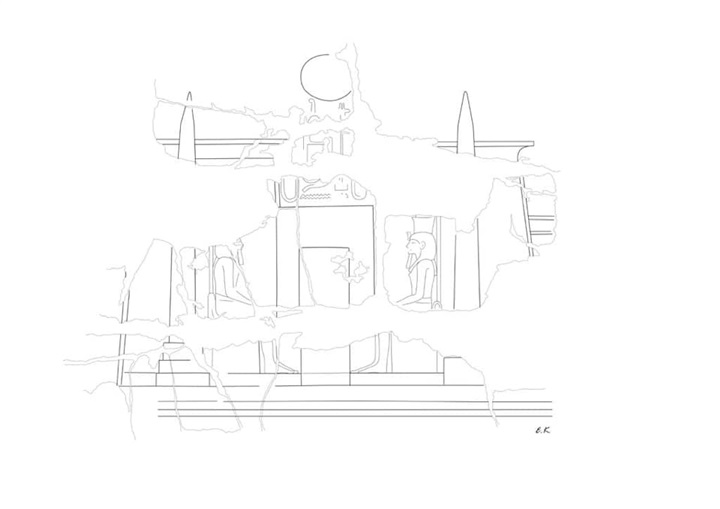
"I think that this is a good time to invite the French to return the obelisk from the Concorde to be standing in front of the temple once more," Hawass said, adding that he makes such a call because the obelisk is completely neglected in Concorde Square and also, this is following President Macron's promise to return miscellaneous artefacts to their original countries. Macron specified that many artefacts taken out of African countries during times of colonisation and imperialism can be returned.
"If the French do return this obelisk to Luxor Temple, the whole world will celebrate France for the gesture, recording its name in gold and ensuring it goes down in history," Hawass said.
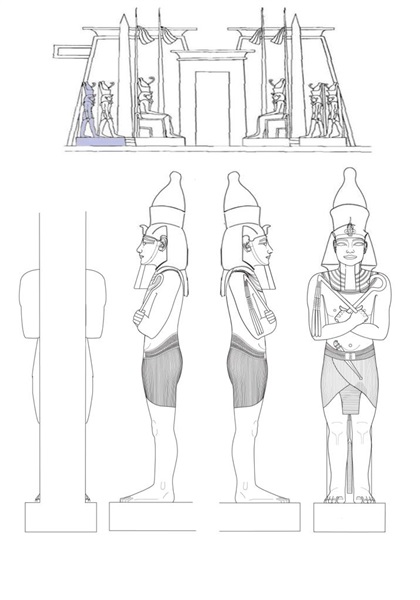
-- Sent from my Linux system.
No comments:
Post a Comment